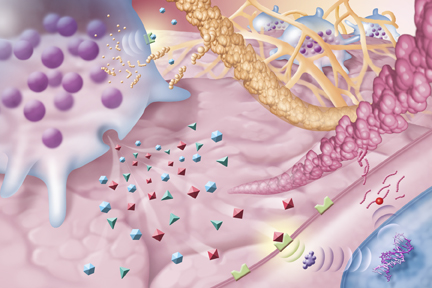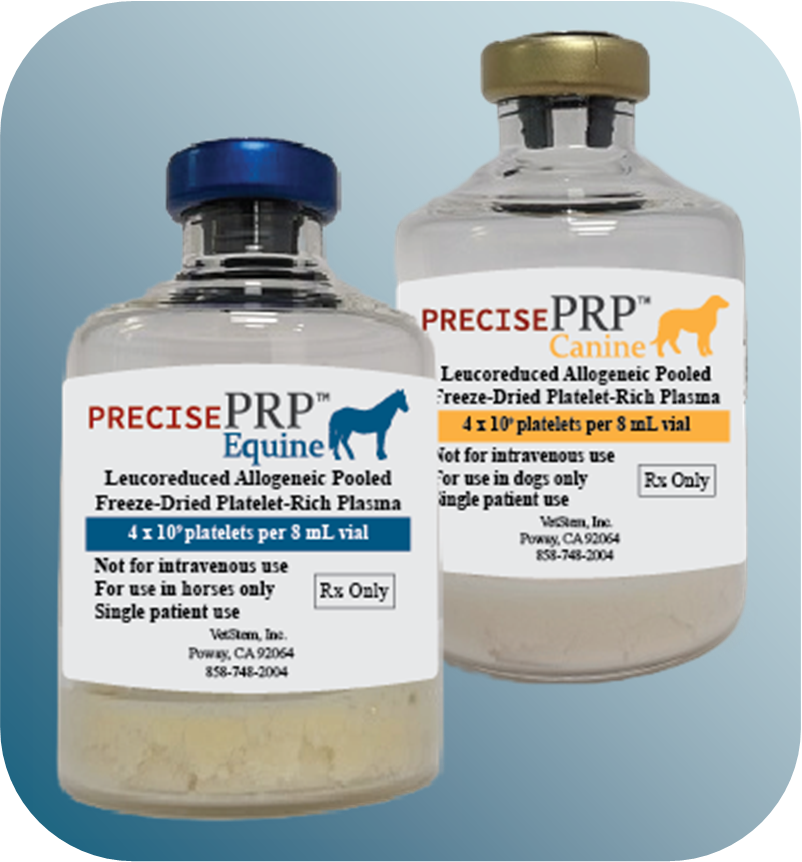Platelet-Rich Plasma Use in Veterinary Medicine
While we primarily focus on stem cells, another exciting tool in the regenerative medicine bucket is platelet-rich plasma (PRP). PRP is defined as concentrated platelets in plasma. But what does PRP do and what can it be used to treat?

The Healing Properties of Platelets
To understand how PRP works, we first need to understand what platelets do in the body. Platelets are very small cells found in the blood stream of mammals and are best known for their ability to clot the blood. However, there is much more that these tiny but powerful cells can do. A complex signaling system sent out from damaged cells attracts platelets to an injury and tells them to release several healing molecules that they have stored inside of them. In turn, these healing molecules attract a multitude of additional healing cells (including stem cells) to the site of injury or inflammation. Together, these cells have been shown to reduce pain, remove the damaged cells, build new blood vessels, prevent further tissue damage, and generate new healthy cells in place of the injured ones.
What can PRP be Used to Treat?
In veterinary medicine, PRP is most often used for orthopedic problems such as cruciate ligament tears, osteoarthritis, and tendon injuries in dogs, cats, and horses. However, recent research has shown that PRP can also aid in the healing of skin wounds, corneal (eye) ulcers, surgical incision sites, tooth sockets following extraction, and even muscle tears. Platelet therapy can also be used in conjunction with VetStem Cell Therapy to maximize the effect of both treatments.
PRP Kits: How they Work and the Associated Disadvantages
Historically, PRP has been produced using the patient’s blood. The blood is run through a mechanical device, or kit, each of which requires a unique processing method. The end result is concentrated platelets in plasma (PRP), however the exact concentration of platelets in the final product is not usually known.
This is perhaps the biggest disadvantage when using kits to produce PRP. There are several variables that can affect the final platelet concentration such as the current health of the patient, platelet count of the patient, operator handling of the sample, and the effectiveness of the kit used to produce the PRP. In a recent comparison of four PRP kits for the production of equine PRP, these kits demonstrated a lack of uniformity relating to the final platelet count and platelet concentration, and each kit failed to meet their respective platelet concentration claim.
Consistency is Key: PrecisePRP™

Fortunately, VetStem found a way to significantly reduce these disadvantages. PrecisePRP™ is a freeze-dried, donor-derived platelet-rich plasma; truly an off-the-shelf PRP. Each vial of PrecisePRP™ is uniform in platelet characteristics and concentration. This eliminates the variability mentioned above so that veterinarians know exactly what they’re injecting every single time, which can increase positive treatment outcomes. Additionally, PrecisePRP™ is not a kit and does not require processing, making it an easy and convenient alternative to currently available PRP kits.
We took the development of this product very seriously to ensure a positive safety profile. All donors are screened according to the FDA CVM guidance 254. Each batch is sterility, endotoxin, and quality tested to meet precise product release specifications. In controlled safety studies of dogs and horses, there were no notable adverse events related to treatment with PrecisePRP™. This unique product is currently available in both dog and horse formats.
Pretty exciting stuff! Want to learn more? Visit www.vetstem.com/pprp.php for more information.



